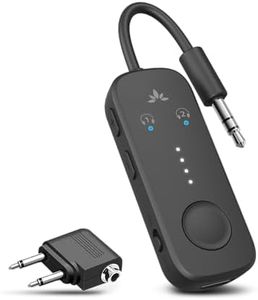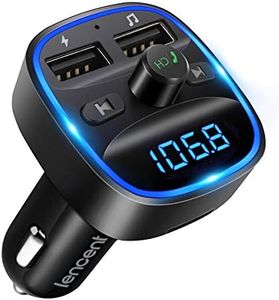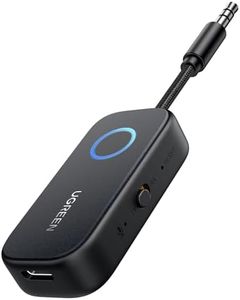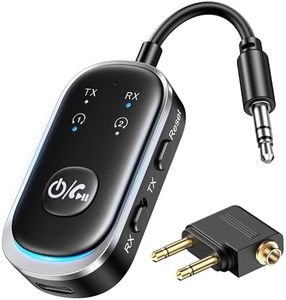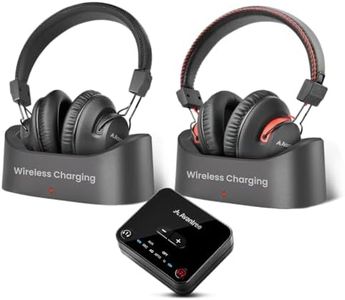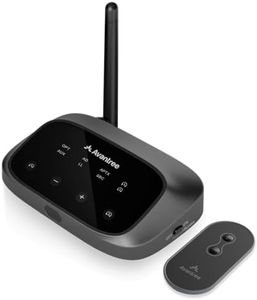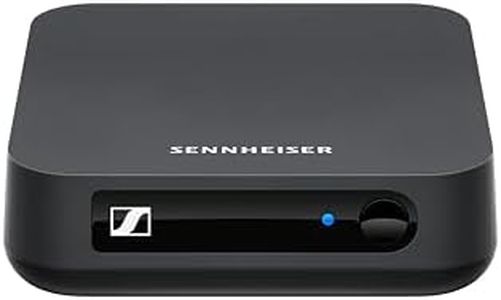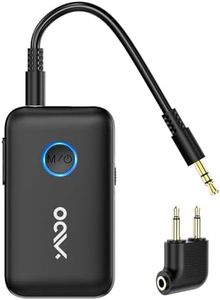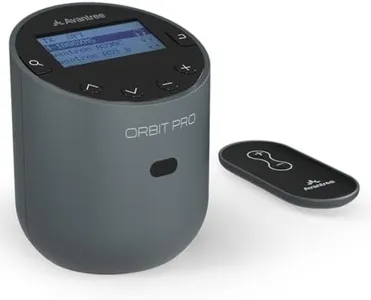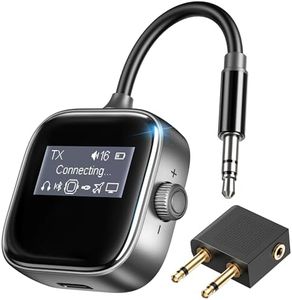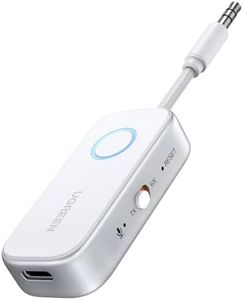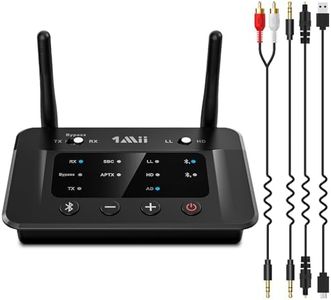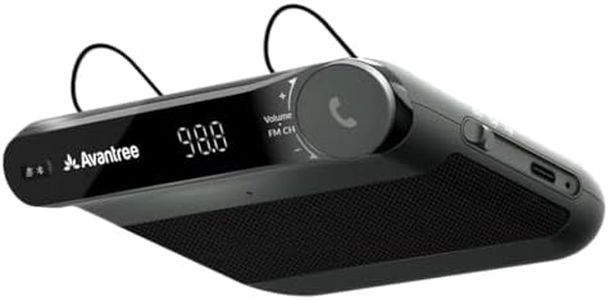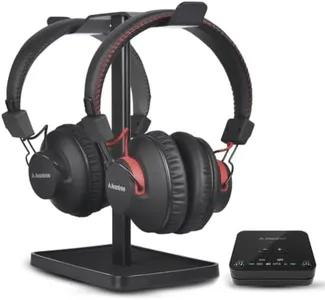We Use CookiesWe use cookies to enhance the security, performance,
functionality and for analytical and promotional activities. By continuing to browse this site you
are agreeing to our privacy policy
10 Best Bluetooth Transmitters
From leading brands and best sellers available on the web.Buying Guide for the Best Bluetooth Transmitters
Bluetooth transmitters are handy devices that let you send audio from a non-Bluetooth source, like a TV or computer, to Bluetooth headphones or speakers wirelessly. Choosing the right one depends on your specific needs, such as the kind of device you'll connect it to and the audio quality you expect. Understanding the main specs helps you find a transmitter that's simple to use, matches your devices, and fits your daily routine.Bluetooth VersionBluetooth version refers to the technology standard the transmitter uses to communicate wirelessly. Newer versions typically offer longer range, better audio quality, and less delay. The most common values you'll see are versions 4.0, 4.2, 5.0, 5.1, and 5.2. Version 5.0 and above often have increased range and stability, making them a good choice if you want more reliable connections or if you’ll be moving around with your headphones. If you’re only using the transmitter for sitting near your device, older versions might still be sufficient.
Audio Codec SupportAudio codecs control how sound is sent wirelessly, affecting both sound quality and delay. Basic codecs like SBC are common and compatible but can have more delay. Advanced codecs like aptX, aptX Low Latency, and AAC provide clearer audio and less lag, which is important for activities like watching TV or gaming where syncing sound to video matters. If lip-sync is critical (like for TV or gaming), prioritize low latency codecs, but make sure your headphones or speakers also support the same codec.
Connection TypeConnection type means the way the transmitter connects to your audio source. The main types are 3.5mm AUX, RCA, USB, and optical (Toslink). 3.5mm and RCA are standard for most TVs, computers, and audio devices, while optical gives higher quality and is common on modern home theater systems. USB transmitters often draw power and audio from a computer or console directly. Check which ports your source device has before choosing, and pick a transmitter with compatible connections.
RangeRange tells you how far the transmitter's Bluetooth signal will reliably reach. Typical values go from 10 meters (about 33 feet) to 30 meters (about 100 feet) or more. Shorter ranges are fine for small rooms or close listening, but if you want to move around your home or cover a larger space, look for a transmitter with longer range. Obstacles like walls and electronic interference can reduce the actual working distance, so plan for a bit of buffer beyond what you think you’ll need.
Battery Life vs. Powered OperationSome Bluetooth transmitters have built-in batteries, while others run on external power (like a USB plug or wall adapter). Battery-powered units are portable and good for temporary setups or travel, but need recharging after a few hours (usually 6–12 hours). Plug-in models are best for stationary uses, such as TVs or desktop computers, since they work continuously as long as they’re plugged in. Consider whether you want to move your transmitter around or keep it fixed to decide which power setup is more convenient for you.
Pairing Capacity (Number of Devices)Pairing capacity describes how many output devices—like headphones or speakers—you can connect to the transmitter at once. Some basic models only let you connect to one device, while others allow dual connections for sharing audio with a friend. If you plan to listen alone, single-pairing is fine. If you want to share your audio, look for a transmitter that supports multiple devices simultaneously.
LatencyLatency means the delay between the sound being created (like movie audio) and when you hear it through your headphones or speaker. High latency causes noticeable lip-sync issues with video. Lower values (under 40 milliseconds) are ideal for watching video or playing games. Higher latency is less of a problem for music. Always look for 'low latency' features if you plan to use your transmitter with TV or games.
